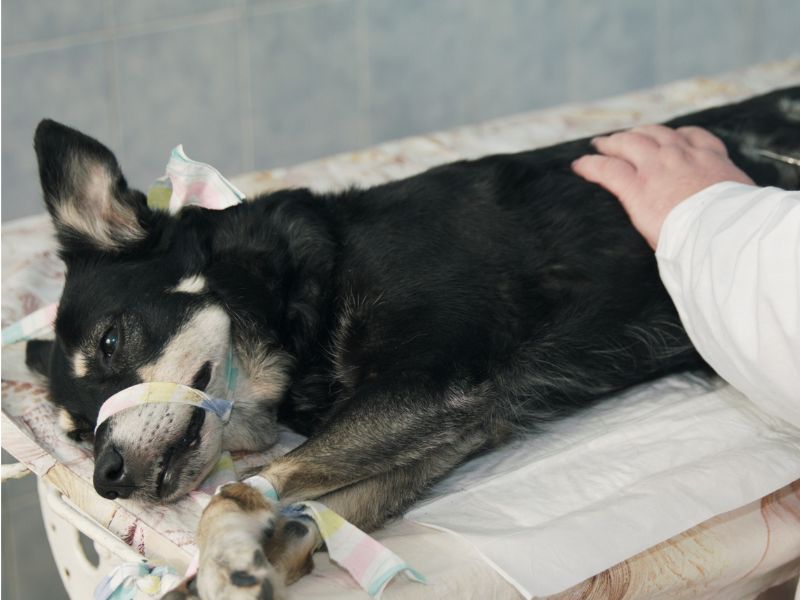As a responsible dog owner, you want to ensure that your furry friend remains healthy and happy throughout their lives. One of the best ways to achieve this is by spaying or neutering your dog. Spaying or neutering is the surgical removal of the reproductive organs in dogs, and it comes with a host of benefits. In this article, we’ll explore the benefits of spaying or neutering your dog, the best time to do it, and the myths and misconceptions surrounding the procedure.
What Is Spaying/Neutering?
Spaying is the surgical removal of a female dog’s ovaries and uterus, while neutering is the removal of a male dog’s testicles. The procedure is performed under general anesthesia and is usually done on dogs between the ages of six months to two years. When a dog is spayed or neutered, they can no longer reproduce, which means that they can’t contribute to the overpopulation of dogs in shelters. This is important because millions of dogs are euthanized in shelters every year because there are not enough homes for them.
Benefits Of Spaying/Neutering Your Dog
Reduced Risk of Certain Health Problems
One of the most significant benefits of spaying or neutering your dog is the reduced risk of certain health problems. Female dogs that are spayed before their first heat cycle have a significantly lower risk of developing mammary gland tumors and uterine infections. Male dogs that are neutered have a lower risk of developing testicular cancer and prostate problems. Additionally, spaying or neutering your dog can also reduce the risk of certain types of infections.

Reduced Behavioral Problems
Another benefit of spaying or neutering your dog is the reduced risk of behavioral problems. Female dogs that are spayed are less likely to experience mood swings, irritability, and aggression during their heat cycles. Male dogs that are neutered are less likely to exhibit aggressive behavior, mark their territory, and wander away from home. Spaying or neutering your dog can also reduce their desire to roam and mate, which can decrease the risk of getting into fights or being hit by a car.
Reduced Risk of Overpopulation
Spaying or neutering your dog is an essential step in controlling the overpopulation of dogs. When dogs are allowed to reproduce freely, it can quickly lead to a surplus of unwanted puppies. These puppies may end up in shelters, where they may be euthanized if they are not adopted. By spaying or neutering your dog, you can help reduce the number of unwanted puppies and ensure that every dog has a loving home.
When Is the Best Time to Spay/Neuter Your Dog?
The best time to spay or neuter your dog depends on several factors, including the breed, age, and health of your dog. Most veterinarians recommend spaying or neutering dogs between the ages of six months to two years. This is because younger dogs tend to recover faster from the procedure and may experience fewer complications. However, some breeds may need to be spayed or neutered later in life, so it’s important to consult with your veterinarian to determine the best time for your dog.
The Spaying/Neutering Procedure
The spaying or neutering procedure is performed under general anesthesia and usually takes about thirty minutes to an hour. During the procedure, the veterinarian will make a small incision in the dog’s abdomen and remove the reproductive organs. After the procedure, your dog will be monitored for a few hours to ensure that they are recovering well. Most dogs are able to go home the same day, although some may need to stay overnight for observation.

See Also: Understanding Dog Anxiety: Causes, Symptoms, and Treatment
And: Understanding the Difficult Decision of Putting Your Dog to Sleep
Recovery And Aftercare
After the spaying or neutering procedure, it’s essential to follow your veterinarian’s aftercare instructions carefully. Your dog may need pain medication, antibiotics, and a special diet for a few days after the procedure. It’s also essential to keep your dog calm and quiet during the recovery period and to prevent them from licking or chewing the incision site. Your veterinarian will schedule a follow-up appointment to remove any stitches and ensure that your dog is healing properly.
Myths And Misconceptions About Spaying/Neutering
There are several myths and misconceptions surrounding spaying or neutering dogs. One common myth is that spaying or neutering will cause a dog to gain weight. While it’s true that some dogs may gain weight after the procedure, this is usually due to overfeeding and lack of exercise. Another myth is that spaying or neutering will change a dog’s personality. While the procedure may affect a dog’s behavior in some ways, it will not change their fundamental personality traits.
Conclusion
Spaying or neutering your dog is a responsible and compassionate decision that can have significant health and behavioral benefits. It can also help control the overpopulation of dogs and ensure that every dog has a loving home. If you’re considering spaying or neutering your dog, be sure to consult with your veterinarian to determine the best time and approach for your furry friend. By taking care of your dog’s reproductive health, you’re taking an important step towards keeping them healthy, happy, and safe.

